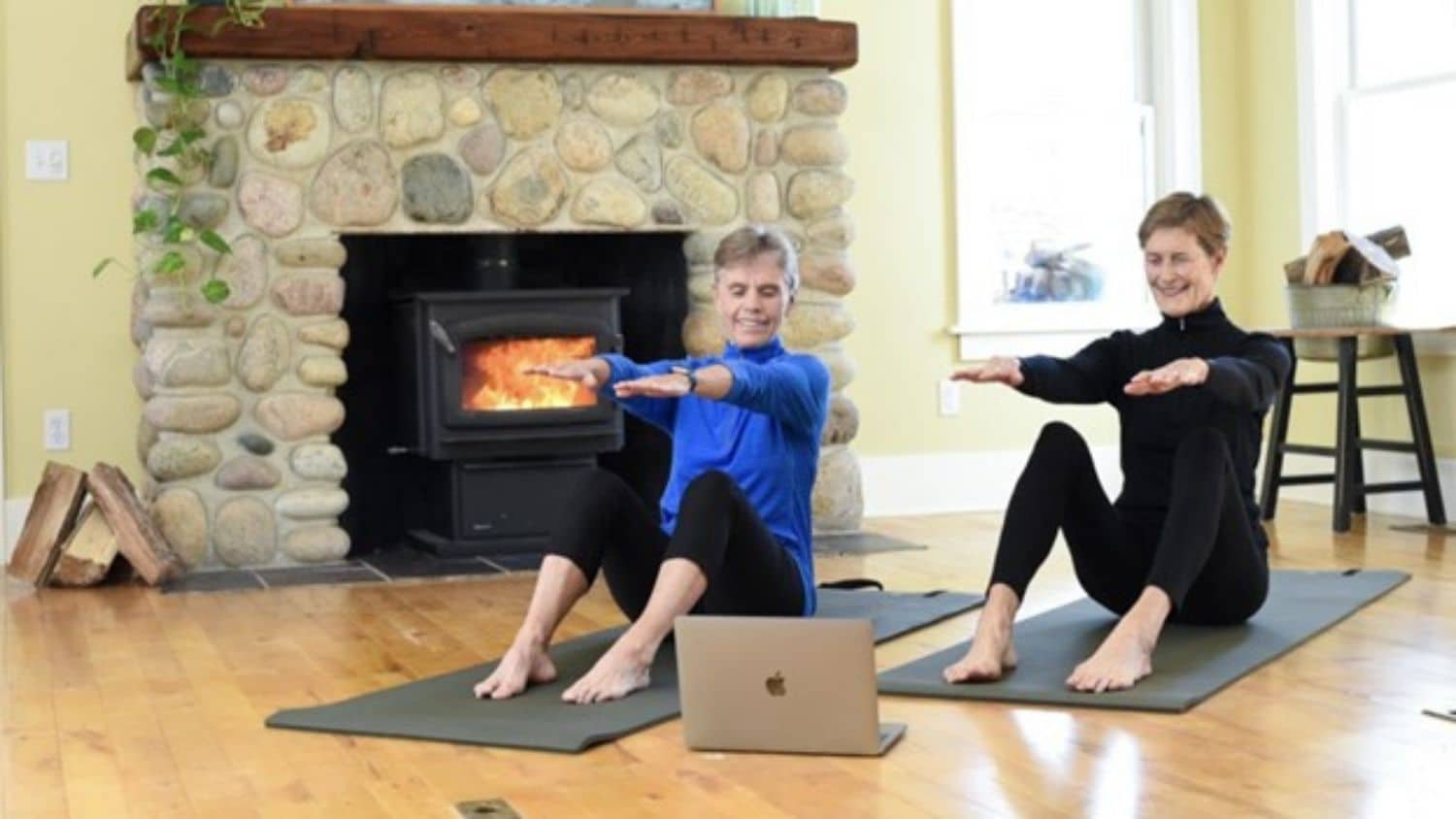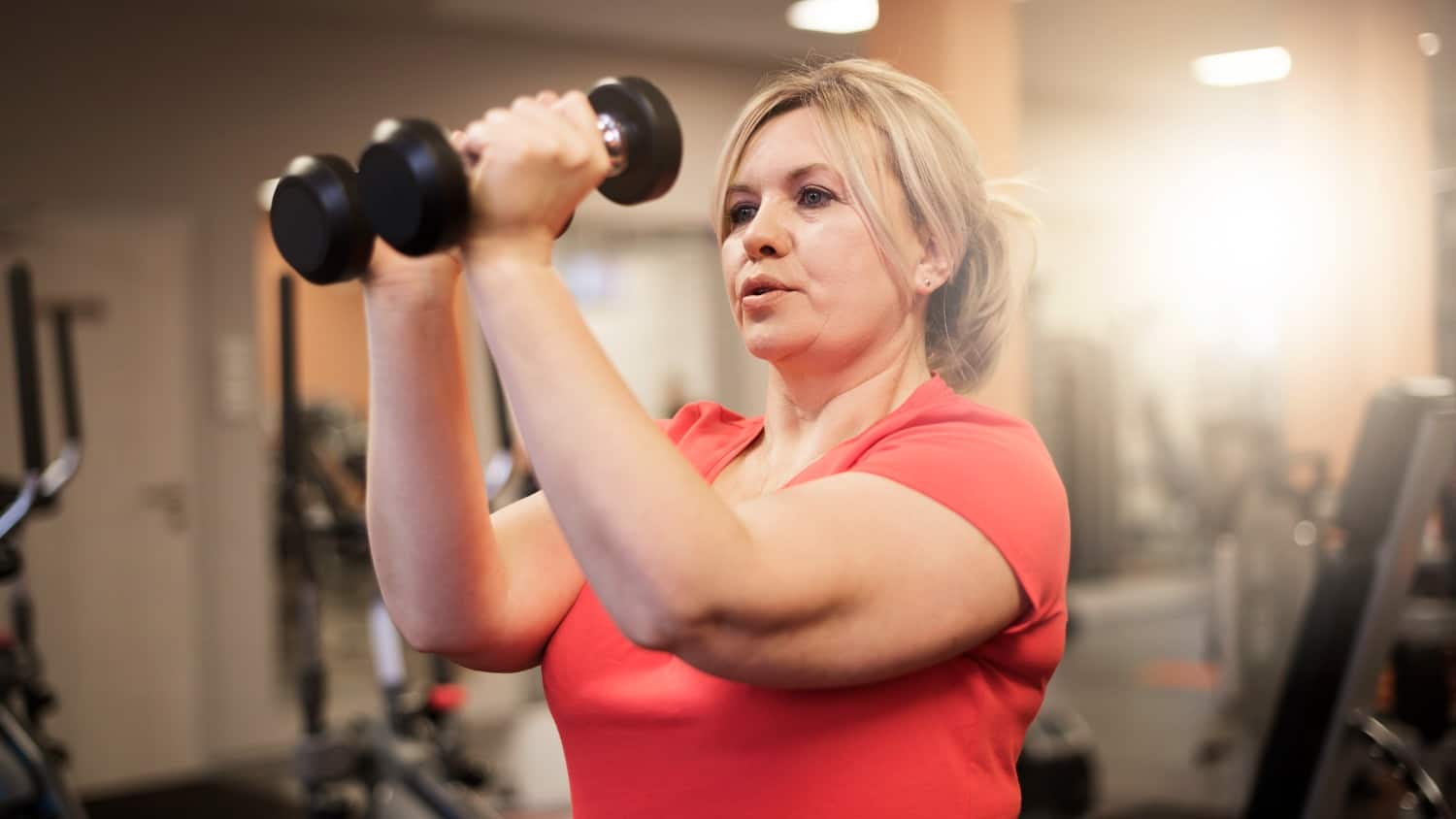
Have Osteoporosis? Strengthen Your Bones with These Exercises
Maintaining healthy bones is a lifelong endeavor, and it’s never too early or late to get started. When it comes to dealing with osteoporosis or osteopenia, keep this simple mantra in mind: Move more, not less.
Research shows that people with or at risk of osteoporosis should be encouraged to exercise and move more with the guidance of their physicians and movement instructors. Because overall, the benefits of physical activity far outweigh any potential risks.
People of all experience levels and backgrounds can benefit from increasing their fitness level through exercise. There is so much to gain from being physically active, and done within guidelines, so little increased risk of fracture that everyone can and should try to increase their time spent moving and exercising.
Research continues to show that movement is the key to maintaining healthy bones. Always follow the advice of your health professional specific to your own body and circumstances.
What Is Osteoporosis?
Osteoporosis is a condition in which bones lose strength and integrity and are therefore more likely to break. People with osteoporosis are most likely to find weaker bones in the hip (neck of femur), spine, and/or wrist.
Although there is an increased risk of fracture with osteoporosis, not everyone who develops the condition will develop fractures, and without fractures you may remain symptom free.
Best Exercises for Osteoporosis
People with osteoporosis often wonder, “Can exercise strengthen or rebuild bone?” The answer is yes, though not all exercise is equally effective at bone strengthening.
There are two main types of exercise that have been shown to be most effective at strengthening bone: impact and weight bearing exercise and muscle strengthening exercise.
In addition to exercises to promote bone and muscle strength, The Royal Osteoporosis Society recommends exercises to keep you steady (balance) and exercises to care for your back (posture).
Weight Bearing Exercise
Weight bearing exercises are needed to strengthen bones. Examples of high impact weight bearing exercises include:
- Jumping
- Running
- High-impact dancing
For some people with osteoporosis, many high impact exercises may not be possible. They may be too likely to increase the risk of fracture, or may be contraindicated for other health reasons. Individuals should discuss this risk with their physician.
For people in this group, low and medium impact exercise may be a better choice. Evidence suggests that while low impact exercise is less effective at actively building bone than high impact exercise, it can still decrease the rate at which bone density is lost.
Examples of lower impact weight bearing exercise:
Muscle Strengthening Exercise
Most of us have heard about the benefits of weight bearing exercise in this mature phase of our lives. But how does muscle strengthening exercise help our bones? Put simply, stronger muscles pull harder on bones and these forces on our bones then stimulate the regeneration of bone. Muscle strengthening exercise includes any activity where your muscles are working against resistance.

Muscle strengthening exercises include:
- Lifting a weight against gravity
- Pulling a resistance band
- Pushing your body weight against gravity as in a plank, push up, or heel raises
- Working against the forces created by springs on a piece of exercise equipment, such as the Pilates Reformer, Cadillac, or Chair
To build bone strength using these exercises, progressive resistance training has been shown to be most effective. This means that as one’s muscles get stronger over time, you should increase the amount of weight or resistance you are working with. If you are working to prevent or mitigate osteoporosis, then putting some load on your muscles and bones and increasing it over time is key.
Exercise to Keep You Steady
Practices that naturally challenge and help you keep your balance include Pilates, GYROKINESIS® exercise, yoga, tai chi, dance, pickleball, tennis or any exercise that has you moving in a variety of planes of motion.
Exercises to keep you steady and prevent falls are ones that:
- Help you practice balancing in a safe way
- Build whole body strength
- Support your posture
What exactly you choose to do depends on your unique age and stage of life, but the formula is to include all three of these focus areas in your weekly exercise plan. Even carefully walking outside on an uneven surface like a lawn can help you “practice” balancing.
You might stand holding on to the back of a chair and reach one leg to the side to tap the floor, then behind you or in front of you balancing on one foot. Standing barefoot on a padded mat or folded towel can work too. The trick is to progress at a pace that is appropriate for you.
Exercise to Care for Your Back
Focusing on posture will maintain the length of your spine and prevent it from becoming stooped, or kyphotic, as you age. Good posture will also help minimize neck and shoulder strain, headaches, and low back pain.
We curl over computers, phones, dishes and even when we run for exercise as we continually reinforce the same postural patterns. With osteoporosis, poor posture can set up a situation that could lead to compression fractures in the spine.
Bringing awareness to your everyday posture and sitting upright is important. Make sure you are not artificially lifting your shoulders to your ears. Find your best posture by thinking about an easy wide chest right at your clavicle bones with your shoulder blades melting down your back.
Then, imagine your spine as a string of pearls that you are gently pulling up to the sky through the crown of your head while also pulling them down into the earth at the tailbone. This will help you lengthen your spine as well as feel grounded and connected to your body.
By including posture supporting exercises in your regular routine and understanding your own unique body, you can avoid kyphosis. Regular care to gently lengthen your spine, stretching your arms overhead, mobilizing your shoulder blades and opening your chest will help you organically keep the mobility and balanced muscles that support your posture.
Gentle kneeling side planks, planks, and opposite arm and leg reaches on all fours are other great ways to strengthen your back muscles.
Can Pilates Help with Osteoporosis?
While Pilates isn’t the only exercise you should do, it does cover most of the bases for maintaining healthy bones! Pilates can be an effective tool for increasing bone and muscle strength, particularly when the load, tension, and repetitions are gradually increased over time.

Impact exercise can be done on the Reformer with the use of a jump board, often making jumping accessible to those who otherwise would not be able to.
Increased core strength, work on balance and alignment, and increased body awareness are all benefits of a consistent Pilates practice. These are all important ways of countering the possibility of falling, as well as the fear of falling.
Pilates also helps improve posture, which is important for strength and efficient gait as well as countering the tendency towards kyphosis (a “hunched over” posture) that is common with osteoporosis and age.
Finally, Pilates is infinitely adaptable to the needs and skills of individuals. The exercises can be tailored to fit people of all ages, stages, and experience levels.
Are There Exercises People with Osteoporosis Should Avoid?
When moving your spine, it is always important to follow your doctor’s advice for your unique situation. We know that it is important to avoid loaded flexion of the spine, found in exercises like sit-ups or crunches.
Some individuals may be advised to avoid any flexion at all as this movement can increase the risk of fracture. These people should also use caution and avoid extreme end range side bends or twists of the spine. Meaning, don’t twist your spine or reach forward with force. Keep movements gentle and easy, enjoying the stretch and lengthening sensations.
Pilates Exercises for Osteoporosis
Maintaining core strength, spinal strength, and mobility helps support healthy bones. If you are interested in trying a new workout for your osteoporosis, these simple Pilates-based exercises are a good place to start.
Do each exercise 6-8 times while maintaining proper form and using breath to support the movement. Please make sure to check with your physician before you try these exercises.
#1: Overhead Reach

Standing with your feet hip-width apart, reach both arms overhead. Grab one wrist with the opposite hand and gently traction the arm, stretching the side body. Root the same side foot into the floor so that there is an oppositional stretch from heel to hand. Switch sides and repeat four to six times on each side.
#2: Hip Rolls

Lie on your back with your feet flat on the floor and hip width apart. Inhale to prepare. Exhale, pushing your feet into the floor to initiate pulling your pelvis off the mat. Roll the hips up one vertebra at a time by using your glutes to lift the pelvis. Keep your ribs down and connected throughout the movement. Inhale to stay. Exhale to articulate your spine back down one vertebra at a time.
#3: Opposite Arm and Leg Lift

Kneel on the floor with your hands under your shoulders and knees under your hips. Keep your abdominals engaged and spine long. Carefully lift one arm and opposite leg at a time and return to the starting position without shifting body from side to side. Repeat on the opposite side.
#4: Extension, Prone

Lie on your stomach with feet hip-distance apart. Place your arms in front of you, palms down, and head relaxed. Inhale as you press your palms into the mat. Lift into one long line, which is a spinal extension using upper back muscles, as pictured.
Pull your shoulder blades slightly toward each other and down your back. Engage your abs as you lift. Then, exhale and lower with control. If the full extension feels too intense, start by lifting just a couple of inches off the floor, keeping your eyes down and lengthening into a dart position. Then progress toward the full exercise as you feel ready.
#5: Plank

Start in a quadruped (kneeling on all fours) position on hands and knees. Walk your feet out to plank position. Pull the sit bones to your heels and keep your head up on your spine to create a long line from your head to your heels. Draw your shoulder blades down your back and pull your low belly in. Hold this position for three slow breaths and build up to six or eight breaths over time.
Strength, Balance, and Posture for Healthy Bones
For healthy bones, remember to simply move more, not less. Whether it’s going for a brisk walk (or run), dancing like nobody’s watching, or my favorite, Pilates, more movement will build strength to help you live the life you love.
If you’d like to try more of our Pilates and Pilates-inspired exercises for osteoporosis, try one of our Strength, Balance, Posture classes at MOVE On Demand. We also offer a weekly livestream version, with a free 14 day trial available.
What do you do to build bone mass? Which type of exercise practice has proven the most useful to you? How did you get started with it?
Tags Fitness Over 60






